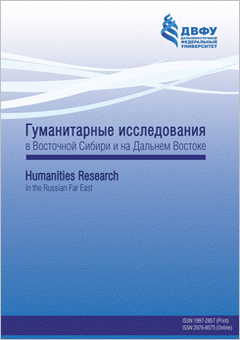Calendrical rites of the East Slavic population of Altai Krai in the 1940s – 1960s as a result of the transformation of ethnocultural identity
DOI:
https://doi.org/10.24866/1997-2857/2023-4/42-53Keywords:
Altai Krai, calendrical rites, ethnocultural identity, adaptation practicesAbstract
Based on the materials of 2013–2023 field studies conducted by the Institute of Archeology and Ethnography, Siberian Branch of Russian Academy of Sciences, the article examines the features of the winter-spring calendrical rites of the East Slavic population of Altai Krai in the 1940s – 1960s. The author identifies innovations in a number of customs and rites that arose as a result of the adaptation of traditional culture to the modernization of life and Soviet cultural policy. It is conclude that during the period under review significant transformations occurred in the calendrical rites of the population, which led to the changes in ethnocultural identity.





